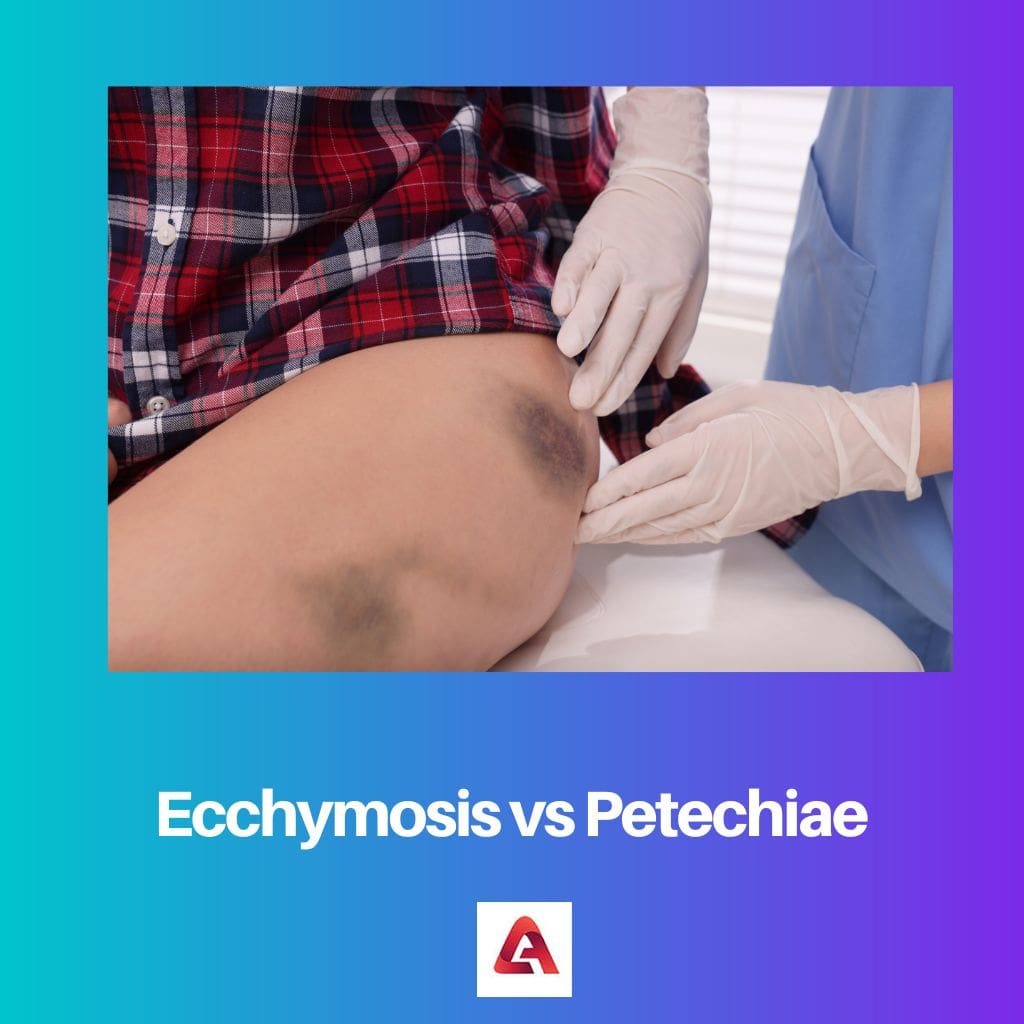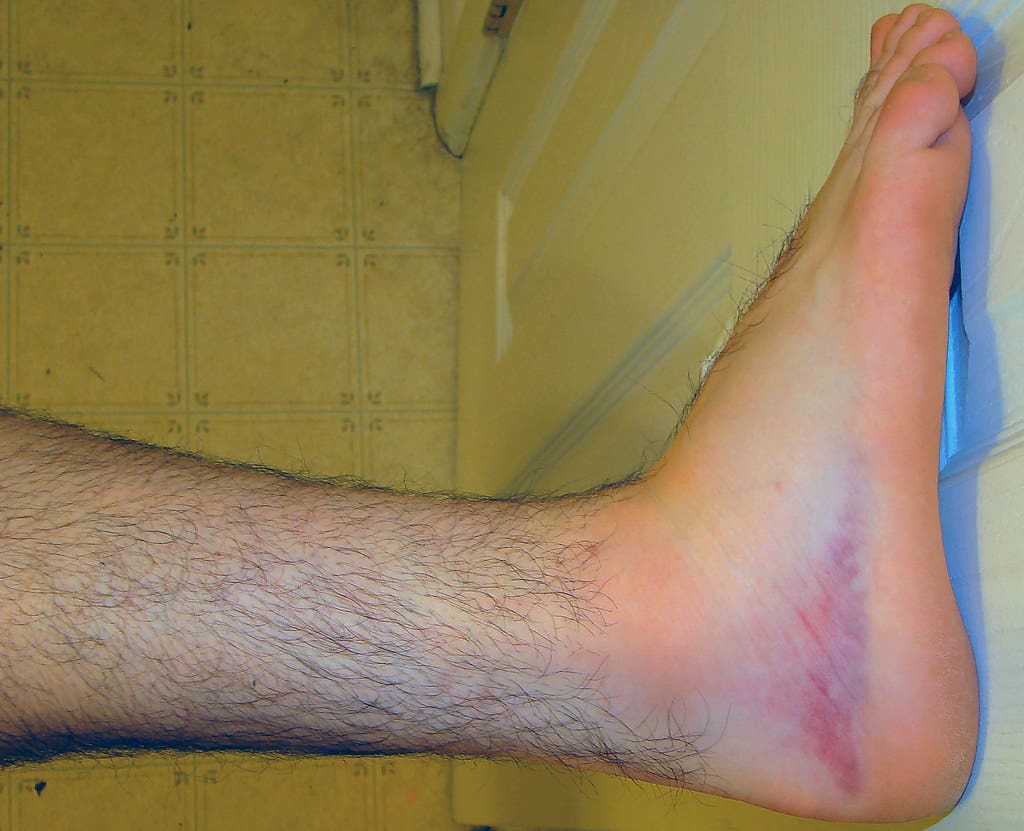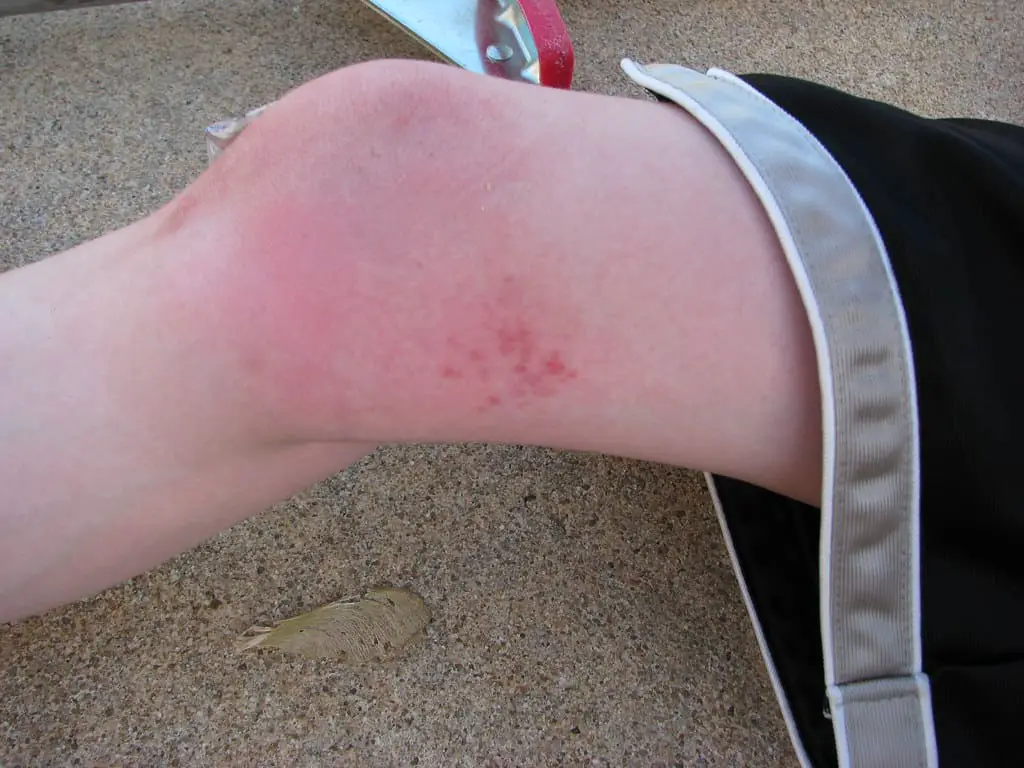Various factors, such as infections or pressure on the skin can cause skin diseases. The appearance of red spots or discoloration on the skin can be due to ecchymosis and petechiae, which go away with time and can be treated easily. Some worst conditions can cause both diseases, which need immediate medical care.
Key Takeaways
- Ecchymosis is characterized by larger patches of discoloration caused by bleeding under the skin; petechiae are smaller pinpoint red or purple spots resulting from capillary damage.
- Ecchymosis occurs due to injury, medications, or medical conditions; petechiae are associated with infections, autoimmune disorders, or blood clotting issues.
- Both ecchymosis and petechiae can indicate underlying health problems and should be evaluated by a healthcare professional.

Ecchymosis vs Petechiae
Ecchymosis is a small bruise under the skin of at least 1cm caused by blood leaking from damaged blood vessels into the tissues of the skin or mucous membranes. Petechiae are small red or purple dots of 3 mm or smaller that occur as a result of bleeding in small capillaries.
Ecchymosis is the discoloration of the skin due to force exerted on the skin or a particular injury causing trauma to the skin. It is a dark purple or blue-colored bruise on the skin and occurs due to the rupture of blood vessels. Ecchymosis can be caused due to injury or any other medical condition, such as renal failure and vitamin deficiencies.
Petechiae refers to the tiny red or blue colored skin spots that appear in the form of clusters on the skin as a result of some infection or deficiency and go away with medications and treatments. They occur due to loss of blood or internal bleeding due to certain infections.
Comparison Table
| Parameters of Comparison | Ecchymosis | Petechiae |
| Nature | Ecchymosis is the breakage of blood vessels due to injuries or traumas to the skin. | Petechiae is the collection of red flat spots on the skin due to some infections or blood loss in the body. |
| Size | Ecchymosis is at least 1 cm wide mark on the body | Petechiae is up to 3 mm in size and spreads over the place |
| Cause | Ecchymosis can be due to injury or lack of vitamin K, leukemia, or pressure on the skin. | Petechiae can occur due to certain viral infections such as cytomegalovirus and others including blood clotting medicines. |
| Appearance | Dark purple or green in the beginning but starts to fade with time and become yellow. | Red or purple small spots on the skin which go away with medicine. |
| Treatment | Using ice packs or cold compression can treat this condition quickly or it goes away with time. | Treating infections and using antibiotics can lead to a reduction or permanent vanishing of the condition. |
What is Ecchymosis
Ecchymosis is the discoloration of the skin occurring due to force or bruises on the skin, which occurs when there is a rupture of blood capillaries. The result is in the form of skin discoloration and pain in the specific area with the bruise. Ecchymosis can occur anywhere on the body, and the impact can differ depending on the type of trauma received to the skin. The discoloration is in the form of a purple or blue mark on the skin. Apart from bruises, ecchymosis can occur due to medical conditions or deficiencies in the body, such as vitamin K deficiency, anemia, or renal failure.
The mark left due to ecchymosis can be treated using cold compression or medications that lighten and vanish the discoloration with time, leading to a pale yellow mark on the skin. They are more than one centimeter approximately, and a type of ecchymosis is encountered under the eye, called “raccoon eye,” which is a result of a skull injury, the one located near the ear depicts brain injury. It can occur outside the skin or even inside the skin, such as on umbilical cords, fallopian tubes, ruptured spleen, etc. Children are said to develop ecchymosis more than adults due to their playful activities and bumping everywhere or falling constantly.

What is Petechiae
Petechiae are round and small red colored spots on the skin that appear as a result of bleeding or due to medical conditions ranging from mild to severe. The spots can be dark red, purple, or brown in color and occur in large numbers in one place, forming clusters of spots on the skin with the appearance of a rash on the skin. Just like ecchymosis, they do not disappear with time or by touching.
Petechiae can occur anywhere on the body, near the arms, eyelids, mouth, and stomach or back. Some of the causes of petechiae include infection in the lining of the heart, injuries like accidents and falling off places, high fever, and body infections, or severe infections like Hantavirus and other common diseases. Vitamin C deficiency can be a major cause of petechiae as well. They can be treated using various medications such as NSAIDs, antibiotics if the patients have infections, etc., or by visiting the doctors. There is no way to avoid petechiae, but it can be avoided by staying away from infections and taking medications that avoid diseases leading to petechiae at early stages. The marks can also go away with time or be treated by a physician.

Main Differences Between Ecchymosis and Petechiae
- Ecchymosis is a whole spot of discoloration on the skin, whereas Petechiae is a collection of small spots on the skin.
- Ecchymosis has a size of a minimum of 1 cm, whereas petechiae are almost 3-4mm in size.
- Ecchymosis is caused by injury or vitamin K deficiency, whereas petechiae are caused by vitamin C deficiency or infections in the body.
- Medical diagnostics can treat Ecchymosis, for petechiae, you need to conduct certain blood tests to diagnose infections in the body or other problems.
- The appearance of ecchymosis goes away with time or a cold compress to the skin, whereas petechiae can go away with blood tests and diagnosis of diseases in the body.
- https://www.osmosis.org/answers/ecchymosis#:~:text=Ecchymosis%2C%20also%20known%20as%20a,and%20tenderness%20accompany%20the%20discoloration.
- https://my.clevelandclinic.org/health/symptoms/21636-petechiae




